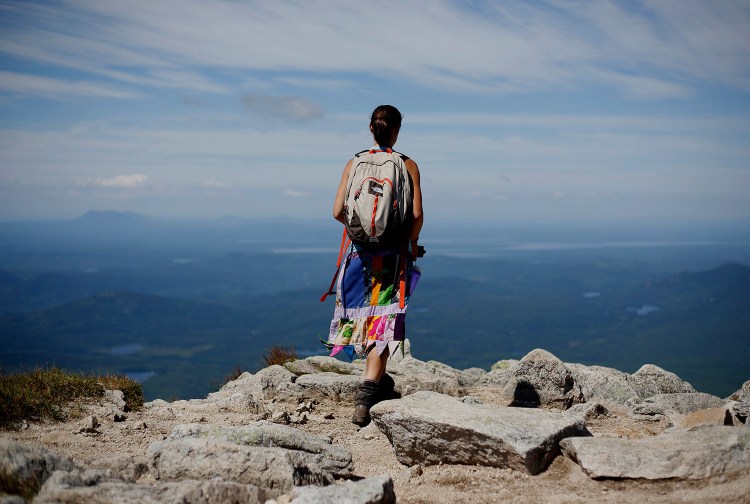Last year, 1,700 northbound long-distance hikers reached the summit of Mount Katahdin, the centerpiece of Baxter State Park and the northern end of the 2,190-mile Appalachian Trail. Most of them go unnoticed – but that wasn’t the case for endurance athlete Scott Jurek: The champagne celebration of his record-setting summit last July resulted not only in summonses for allegedly violating Baxter rules, but also in threats to re-route the trail out of the park.
It’s encouraging, then, to learn that a campaign is underway to educate AT “thru-hikers” about Baxter’s resources and unique regulations. Keeping the park and trail as partners should be the goal, and we have faith that it can be done without sacrificing what makes Baxter special.
Interest in completing the entire Appalachian Trail has soared, with the number of thru-hikers at Baxter rising from 359 in 1991 to 2,137 in 2015. But while summiting thru-hikers make up just 3 percent of all Baxter users, park officials say they consume a disproportionate share of staff resources and occasionally flout restrictions on camping, hiking in large groups and excessive celebrations. (Jurek, the professional athlete, wound up paying a $500 fine for drinking alcohol atop Katahdin in violation of Baxter rules; other charges were dropped.)
We’ve chastised park officials for their overreaction to Jurek’s relatively minor – and hardly unique – transgression. However, they’ve raised legitimate issues. The park, according to director Jensen Bissell, is at capacity – which means that the expected increase in the number of thru-hikers will strain park staff and infrastructure. Hence, the warnings about moving the trail.
To address these concerns, the Appalachian Trail Conservancy, the nonprofit that oversees the AT, this week opened a visitor center. There, two full-time staff will help thru-hikers prepare for the final 115-mile stretch of the trail, including the grueling 100-Mile Wilderness, with no towns, stores or paved roads.
The hikers also will be able to pre-register for their Baxter summiting permits – a new requirement – and hear messages about the importance of keeping their celebrations quiet, small and booze-free.And all this will just be part of a trail-long education effort, according to Ron Tipton, executive director of the conservancy.
The growth in the number of hikers on the Appalachian Trail is a positive trend. It’s heartening that more people want to experience what the outdoors has to offer firsthand. But we’re also glad to see that trail advocates are taking seriously the threat that the AT’s popularity presents to the unique beauty of Baxter State Park.
Send questions/comments to the editors.



Success. Please wait for the page to reload. If the page does not reload within 5 seconds, please refresh the page.
Enter your email and password to access comments.
Hi, to comment on stories you must . This profile is in addition to your subscription and website login.
Already have a commenting profile? .
Invalid username/password.
Please check your email to confirm and complete your registration.
Only subscribers are eligible to post comments. Please subscribe or login first for digital access. Here’s why.
Use the form below to reset your password. When you've submitted your account email, we will send an email with a reset code.